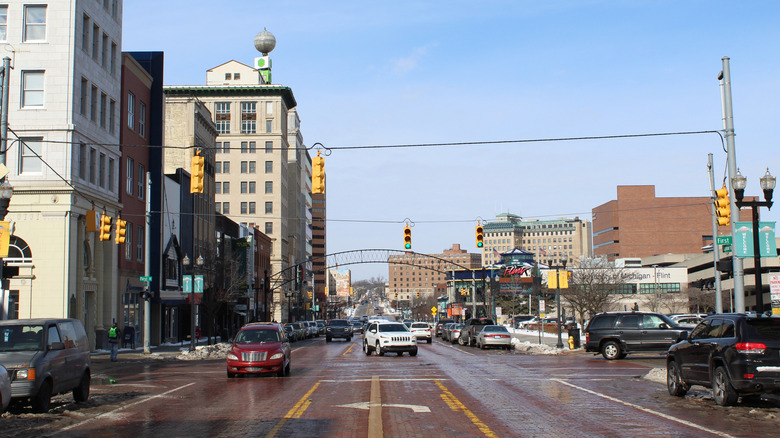What A 'Michigan Left' Actually Means And Where You'll See It
If you ever find yourself driving through Michigan, whether to chase awe-inspiring waterfall views, explore one of the best-kept trail systems in the Upper Peninsula, or reach a lovely coastal city with the state's prettiest fall foliage, you might notice something a little unusual at certain intersections. Instead of a left-turn lane, you'll see signs with one arrow going straight and another curving back around. That's your cue that you're not allowed to turn left. Instead, drive past the traffic light and make a U-turn at the median, and then turn right. The name of this move is called the "Michigan Left." It might sound annoying at first, but traffic engineers didn't invent it to make life harder — they designed it to reduce crashes and improve traffic.
The Michigan Department of Transportation (MDOT) invented the Michigan Left in the 1960s, and now, it's implemented in more than 700 intersections across the state. Officially, transportation departments call it a "median U-turn intersection." Today, Michigan isn't the only place using this idea. Similar concepts appear in Australia and Mexico, and several U.S. states like Arizona, Florida, North Carolina, Texas, Utah, Ohio, and Louisiana have added median U-turn intersections on busy roads, too.
The Michigan Left keeps drivers safe
Normal left turns can be dangerous because you're cutting across oncoming cars, cyclists, and pedestrians. The Federal Highway Administration estimates that approximately 27% of intersection crashes across the U.S. involve left turns. The Michigan Left removes that head-to-head conflict. Since this design has been implemented, MDOT reported 30% to 60% fewer crashes at some intersections, along with smoother traffic flow. Studies from the Federal Highway Administration also show that median U-turn intersections can move more vehicles per hour than traditional layouts.
Even with those benefits, the Michigan Left isn't adopted everywhere. One reason is because it takes up space. Median U-turns need a wide median or extra right-of-way lane. In Michigan, many of the medians are 60 to 100 feet wide. In dense cities or older neighborhoods, that amount of room doesn't exist. Another challenge is that drivers in many places might find this concept confusing because it's not a normal left-turn movement. That can lead to wrong turns or safety issues unless the design is clearly marked with signs and pavement arrows. Despite those hurdles, some transportation departments still recommend Michigan Lefts because they've been shown to reduce crashes, improve traffic flow, and cost less than building conventional intersections.

